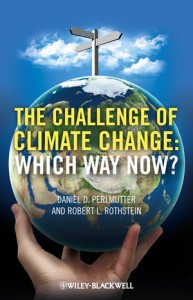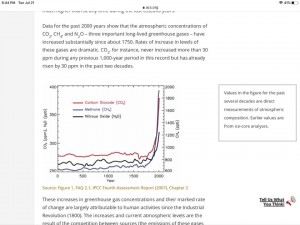From an Article by Justin Worland, TIME — America Must Change, July 9, 2020
For the past five years, climate advocates had positioned 2020 as critical in the fight against climate change. Under the Paris Agreement, countries are required to submit new plans to reduce emissions in 2020, and climate diplomats had planned a series of meetings around the world this year to build momentum, culminating with the U.N. climate conference in Glasgow, in November.
The Glasgow event was postponed a year, but the coronavirus pandemic has created a new sort of momentum. Empty city streets have been transformed into pedestrian space with cars banished, and many cities say they’re not going back. The oil industry has faced a reckoning, with the U.S. benchmark price at one point in mid-April dropping into negative territory and investors fleeing the industry; smaller firms filing for bankruptcy; and some of its biggest players writing down assets they say have lost their value.
With the writing beginning to appear on the wall, many countries are starting to build a different world. In South Korea, the newly re-elected government has promised a $10 billion Green New Deal to invest in renewable energy and make public buildings energy efficient.
In Costa Rica, one of a few developing countries to commit to eliminating their carbon footprint by 2050, leaders have created a new fee on gasoline to fund social-welfare programs and are planning to issue new green bonds to fund the next stage of climate adaptation programs. Rwanda, which has a GDP of roughly $9 billion, has adopted an $11 billion plan to reduce emissions and adapt to climate change, which includes a push for buses, cars and motorcycles to go electric. “We cannot afford to have the same mode of recovery, the same mode of doing business, the same mode of economic activity,” says Juliet Kabera, director general of the Rwanda Environment Management Authority.
International institutions are playing a critical role nudging these countries. The IMF, which has said it “stands ready” to use its $1 trillion lending capacity to stave off the effects of the coronavirus pandemic, has made climate resilience a key criterion for its lending. This has already paid dividends: some 50 nations, including dozens of developing countries, committed in late June to address climate change in their coronavirus recovery plans.
“It’s a great catalyst to think about building a new world,” says Costa Rican President Carlos Alvarado Quesada. “Whatever we decide as a country or as a global community in the next six or 10 or 12 months is going to determine what happens on the earth for the next decade.”
Nowhere will such an approach have as large an impact as in the E.U. When compared with countries, the bloc is the world’s second largest economy and third largest emitter. Its pandemic recovery will help achieve the proposed target of halving its emissions in 10 years by spending $100 billion annually to make homes energy-efficient, $28 billion to build renewable energy capacity and up to $67 billion for zero-emissions trains. The European investment in going green will hurt coal-mining jobs in places like Poland and the Czech Republic, but the European recovery program will pay billions to retrain the workers and transition them to other industries. The measure awaits approval by the member countries, and the details are subject to negotiation, but observers do not expect the direction of the policy to change.
Other major players in the global economy, most notably the U.S. and China, have not made as clear commitments to a green-tinged recovery. Upcoming decisions in both of those countries, which combined are responsible for nearly half of global emissions, are urgent.
China is being pulled in two directions as it develops a plan that will set the course of its development–and, by extension, its emissions–for the next half decade. In March, as China’s coronavirus epidemic began to subside, the nation’s powerful Politburo Standing Committee, which is made up of senior leaders of the Communist Party, including President Xi Jinping, endorsed a proposal to expedite $1.4 trillion in spending on so-called “new infrastructure” that includes electric-vehicle charging stations and high-speed rail, as well as 5G technology, which wouldn’t cut emissions per se but would help advance the country’s tech sector rather than its heavy industry, stimulating economic growth with lower emissions.
But the degree of commitment to those green recovery measures remains unclear. The Politburo Standing Committee’s push is unfunded, leaving provincial governments to follow through. So far, the evidence on the ground has not been encouraging. Local Chinese governments have approved new coal-fired power plants this year at the fastest clip since 2015–a surefire way to stimulate economic growth and emissions. And the country is reportedly planning to ramp up production of oil and natural gas. Demand has fallen, but cheaper oil and gas typically stimulate the economy. Abroad, China continues to fund emissions-intensive projects through its Belt and Road Initiative. In Africa, for instance, China is financing new coal-fired power plants, even as many international financial institutions have walked away from the energy source.
External pressure is likely to force the issue, and the E.U. is trying to offer just that. To push China and others along, the bloc is crafting a new tax on imports from countries that aren’t reducing emissions. Climate and trade are both currently being discussed by officials behind the scenes and were planned to be on the top of the agenda at a now postponed September summit between the E.U. and China. “Europe is a very important market for the Chinese,” says Laurence Tubiana, the CEO of the European Climate Foundation and a key architect of the Paris Agreement. “China can be secured in its potential exports to Europe by understanding that it can secure positive trade relations by increasing its climate ambition.”
Still, when it comes to turning the climate ship around, there’s no substitute for the U.S., and the country has already missed opportunities. For example, before doling out bailout money, France demanded that Air France stop operating emissions-intensive short routes, and Austria forced Austrian Airlines to agree to cut its emissions 30% by 2030. Contrast that with the U.S., where the government decreed that to receive federal dollars, airlines could not drop any of their destinations–even if that meant flying planes empty–and Congress rejected an attempt from several Democratic Senators to attach green strings to the airline bailout.>>>>>>>>>>>>>>>>>>>>>>>>>>>>>>>
See also: Where Will Everyone Go? By Abrahm Lustgarten, ProPublica, July 23, 2020
ProPublica and The New York Times Magazine, with support from the Pulitzer Center, have for the first time modeled how climate refugees may move across international borders. This is what they found.


